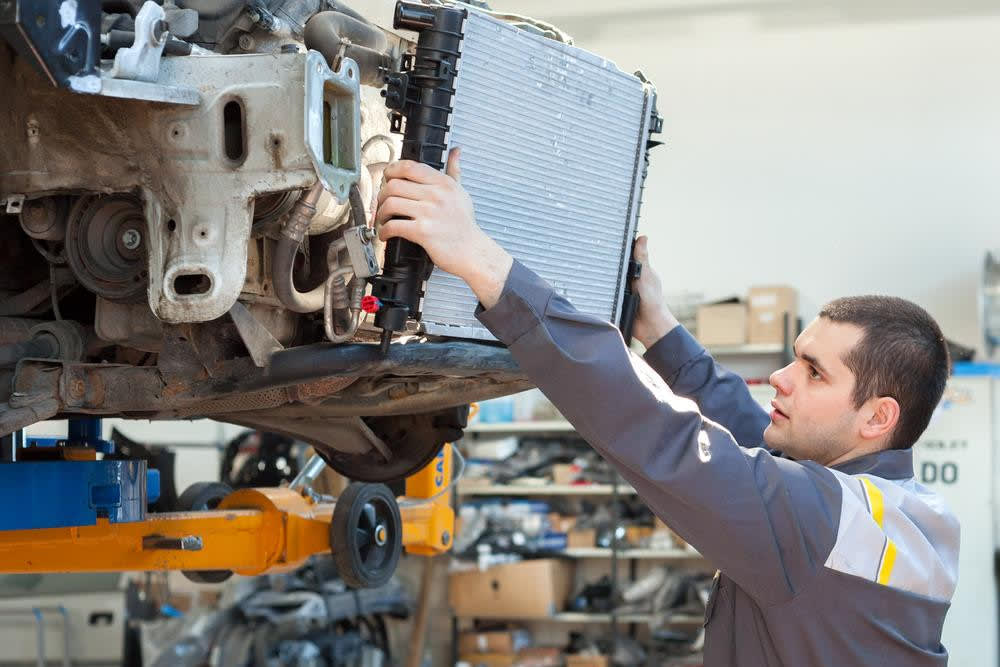

The radiator’s job is to keep the engine from overheating. The engine produces heat while it is running. Coolant absorbs this heat, then passes it through the radiator where it is cooled off. The coolant is then circulated back to the engine. The radiator is the main component of the cooling system, so it is important that it is in good working condition. If you suspect your radiator is going bad, watch for the following symptoms:
1. Leaking coolant onto the floor
The coolant flows through the radiator, so if there is a leak in the radiator, coolant will leak onto the floor underneath the vehicle. It may be while you are driving or while your vehicle is parked. To positively identify if you have a leak or crack in your radiator, the professionals at YourMechanic will need to do a pressure test to verify the radiator is the cause. During this test the radiator is pressured and colored dye is added to the cooling system, and if it leaks out then you may need to have your radiator replaced.
2. Vehicle overheats
If your vehicle is constantly overheating, the radiator may be going bad. One of the most common failures in the vehicles that overheat is a failing radiator since it is the only way engine coolant is cooled. It may not be to the point where it has completely failed, so the issue should be addressed immediately. If this problem is left unattended, then the engine will continue to overheat and cause the vehicle to break down. When this happens, the repair will be much more extensive, so it is a good idea to address the issue as soon as the vehicle starts to overheat.
3. Sludge in the radiator
The coolant in your vehicle should be yellow or green or red normally. As the radiator goes bad, contaminants discolor the fluid making it a rusty or oil color. This turns into sludge and the fluid will not be able to cool the engine efficiently because it will not drain properly and remain in the radiator. This can be from a failing radiator for vehicles that contain a transmission cooler inside the radiator. The barrier between the coolant and transmission fluid fails and the fluids mix. If you or a mechanic notice sludge in your radiator, it will need to be replaced as it can cause extensive damage to the engine and transmission.
4. Low coolant
If your low coolant light comes on or you are constantly refilling your coolant tank, there may be a leak in the radiator. Do not just keep refilling your coolant, take your vehicle to have it properly diagnosed.
As soon as you notice leaking coolant, your vehicle keeps overheating, you have low coolant, or sludge in your radiator, contact a mechanic to make repairs to your cooling system. YourMechanic makes getting repairs to your radiator easy by coming to your home or office to diagnose or fix issues. You can book a service online 24/7. YourMechanic’s qualified Technicians are also available for any questions that may arise.



